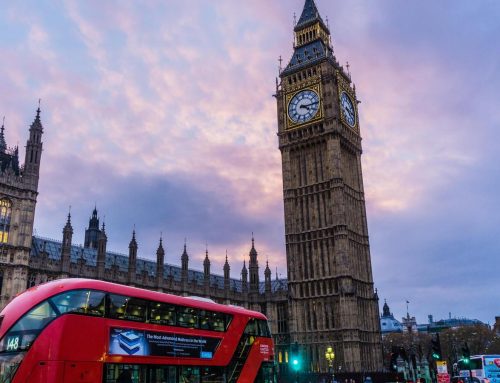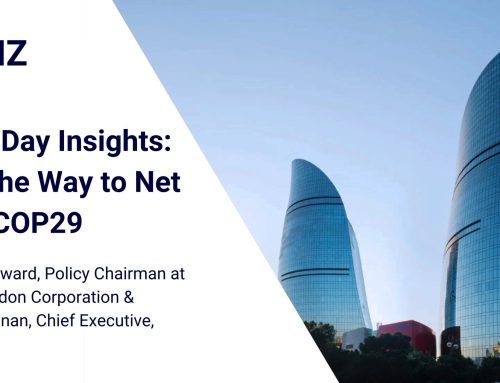The COP28 climate talks began with a new fund to address the increasingly severe losses and damage vulnerable countries face from climate impacts and concluded with the first international agreement to tackle climate change’s main driver: fossil fuels.
COP28, with its record attendance, has run in parallel, with discussions happening beyond the negotiators but also among the private sector and civil society. In this summary, I outline nine key takeaways from COP28 that businesses can leverage through proactive measures to advance progress toward achieving net-zero objectives.
1- Transitioning Away from Fossil Fuels
COP28 marked the first COP officially acknowledging that fossil fuels constitute the fundamental cause of climate change. It’s noteworthy that it wasn’t until COP26 in Glasgow in 2021 that fossil fuels were initially mentioned in an international climate agreement. However, the statement still fell short of ambitious targets. Despite most countries advocating for a robust statement regarding the phase-out or, at the very least, the reduction of fossil fuels, the agreed-upon language emphasized the need to “transition away from fossil fuels in energy systems, in a just, orderly and equitable manner, accelerating action in this critical decade, to achieve net zero by 2050 in keeping with the science.”
2- Loss and Damage Fund
Following months of rigorous negotiations over the year, the Loss and Damage Fund became fully operational on the inaugural day of COP28. This fund is crafted to assist nations susceptible to climate change in addressing the impacts that surpass adaptability. As the conference concluded, commitments totalling $700 million had been made to the fund, with contributions from countries such as the UK, Japan, UAE, Germany, and the US. However, it is still unclear how the fund will work and what the major funding streams will be.
3- Global Clean Energy Pledge
A total of 118 countries signed a pledge to triple renewable energy capacity and double the global rate of energy efficiency by 2030, marking a positive step forward. It is important to note that the pledge acknowledges the role of “transitional fuels” in maintaining energy security temporarily. This acceptance makes the use of climate-damaging liquefied petroleum gas permissible. While not ideal, in developing countries, it remains a healthier and less polluting option for home cooking and heating compared to burning wood or other biomass. Nevertheless, a timeline for the use of these transitional fuels should be established. Additionally, in terms of financing, there is uncertainty regarding how the world will secure funding for the extensive transition to clean energy it has pledged to undertake.
4- Oil and Gas Decarbonisation Charter
Besides expanding renewable energy capacity, a crucial measure involves minimizing Scope 1 and 2 emissions (emissions originating from production, not consumption) associated with fossil fuel operations. During COP, 50 companies representing over 40 percent of worldwide oil and gas production endorsed the Oil and Gas Decarbonization Charter. These companies pledged to achieve net-zero operations by 2050 for Scope 1 and 2 emissions, nearly eliminate methane in upstream operations by 2030, cease routine flaring by 2030, and enhance transparency in emissions reporting.
5- New Collective Qualitative Goal (NCQG)
The outcome of COP28 deferred most financial issues to COP29, marking the adoption of a significant climate finance objective known as the New Collective Qualitative Goal (NCQG) as the key focus for the upcoming year. This fresh target is set to replace the existing commitment made by developed countries, which pledges an annual provision of $100 billion in climate finance to developing nations, initially established in 2009. The formulation of this new goal must account for the needs and priorities of developing countries, estimated at $5.8 trillion to $5.9 trillion by 2030. However, negotiators didn’t delve into specific elements like timeframe, transparency arrangements, sources, and structure.
6- Global Stocktake concluded
The Global Stocktake finalising included reflections on financial progress. This included acknowledging that countries failed to meet the $100 billion goal in 2021, but negotiators did not specify whether or how to make up the shortfall. The outcome also recognized the need to make all finance flows consistent with the goals of the Paris Agreement, as laid out in Article 2.1c. This could cover a broad set of public and private flows and require aligning finance so that it not only advances positive climate action but also avoids harmful funding such as fossil fuel subsidies. The Global Stocktake decision also underscored the importance of reforming the multilateral financial architecture, including multilateral development banks, institutional investors and other financial actors.
7- New pledges towards the Green Climate Fund
COP28 also brought an additional $3.5 billion in new pledges to the second replenishment of the Green Climate Fund, the largest international fund dedicated to supporting developing countries in tackling climate change. The second replenishment now totals $12.8 billion, 28% more than the first replenishment. The challenge now will be ensuring pledges become actual financial disbursements to developing countries, with high-quality investments that meet countries’ needs and leverage private finance.
8- First commitment to transform food systems
Over 130 heads of state and government, representing countries responsible for 75 percent of food-related greenhouse gas emissions, endorsed a Declaration on Sustainable Agriculture, Resilient Food Systems, and Climate Action. This marked the first instance of leaders committing to adapt and transform their food systems as part of climate action, pledging to incorporate relevant targets into their national plans by 2025.
9- Global Goal on Adaptation
Governments have endorsed a ‘framework’ for adaptation. This topic is gaining relevance for investors since strategies oriented toward adaptation can effectively mitigate future losses while generating positive returns that contribute to both societal and environmental well-being. The agreement provides some clarity on the simultaneously broad and context-specific nature of adaptation action. However, the absence of clear targets and quantifiable metrics means this agreement lacks effectiveness in its current iteration.
What happens next: Finance needs to flow toward the transition
Similar to previous COP resolutions, this agreement is not legally binding, and the effectiveness of implementing this commitment will hinge on the mechanisms put in place. Therefore, it is crucial to create an enabling policy environment and back commitments with policy and regulation.
The UAE made a significant contribution through Alterra – a $30 billion platform created by the UAE to invest in climate funds and projects, but questions remain about the distribution of funds to other developing nations. Additionally, the earmarked $700 million for the loss and damage fund is by far not sufficient, given the escalating costs of climate change impacts. Despite the announcements, there’s scepticism about where the funds will truly come from and how effectively they will be deployed on the ground. This means that all these financial commitments need to translate into tangible actions on the ground to close the existing loopholes and make an impact.
The finance sector plays a significant role in mobilizing and directing investments toward new technologies and sustainable projects to progress towards net-zero goals. This COP underscored the essential collaboration between the private and public sectors and emphasized the increasing importance of joint efforts to address climate issues and effectively translate net-zero commitments into actionable outcomes.
Contact
Elena Pérez Celis,
Head of Policy & Public Affairs
E: elena.perezcelis@bankersfornetzero.co.uk



